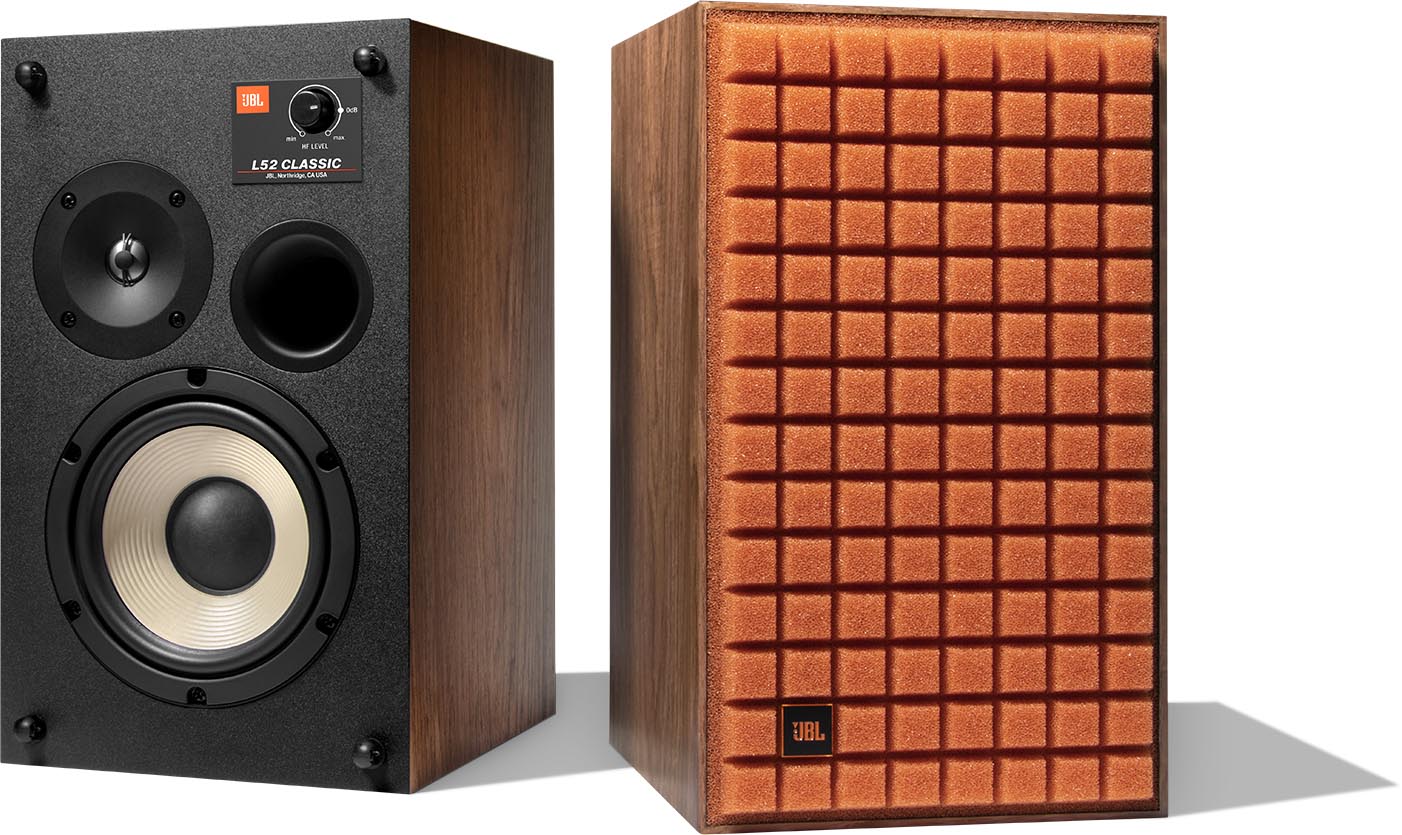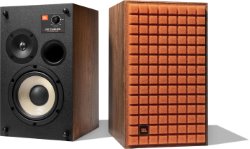ELAC Debut F6.2 vs. JBL L52 Classic

| ELAC Debut F6.2 Tower Speaker | JBL L52 Classic Bookshelf Speakers |
| MSRP | |
| $1060 | $1000 |
| Dimensions (H × W × D) | |
|
44.31” × 8.12” × 11.63” 1125mm × 206mm × 295mm |
13.00” × 7.74” × 8.51” 330mm × 197mm × 216mm |
| Power Type | |
| Passive | Passive |
| Frequency Response | |
| 39-35,000 Hz | 47-24,000 Hz |
|
Amazon.com
|
Amazon.com
|
Key Takeaways
TLDR Summary: In a battle of budget audiophile champions, the ELAC Debut F6.2 towers offer room-filling sound with deep bass and a wide soundstage. Designer Andrew Jones' acumen shines in these floorstanders, making them suitable for larger rooms. Meanwhile, the JBL L52 Classic bookshelf speakers are a nod to vintage aesthetics, delivering a lively, dynamic performance with a punchy mid-bass, characteristic of JBL's house sound. Compact and easier to place, they're ideal for smaller spaces or paired with a subwoofer. Choosing between them hinges on space, preference for physical stature, and whether one values the ELAC's depth or the JBL's spirited presentation.
Speaker Comparison
When one is faced with the challenge of comparing two notable speaker offerings, such as the ELAC Debut F6.2 Tower Speaker and the JBL L52 Classic Bookshelf Speakers, the task is as exciting as it is complex. Both carry the legacy of their brands, renowned for exceptional audio performance. In this analysis, we'll delve into the nuances that set these speakers apart, guiding you through a journey of sound that is as much about the technical aspects as it is about the emotional impact of music.
Aesthetic and Design Philosophies
The ELAC Debut F6.2 stands tall and confident, its tower design making a statement in any room it graces. With a black ash vinyl finish, it presents a classic look that is clean and unobtrusive. In contrast, the JBL L52 Classic carries a retro charm that harkens back to the golden era of hi-fi. Its walnut wood veneer and Quadrex foam grilles in a choice of three colors allow it to blend into modern and vintage-themed interiors with equal finesse. Here, the choice between modern minimalism and nostalgic warmth becomes a personal preference.

 (at Amazon.com)
(at Amazon.com)Sound Characteristics
The sound signature of the ELAC Debut F6.2 is characteristic of designer Andrew Jones' philosophy of creating an expansive soundstage with a focus on clarity and detail. Its three-way design, featuring a 1-inch silk dome tweeter, a 6.5-inch aramid-fiber midrange, and two 6.5-inch aramid-fiber woofers, allows for a precise division of labor, ensuring that each frequency band is handled with care and finesse. On the other hand, the JBL L52 Classic opts for a simpler two-way design with a 0.75-inch titanium dome tweaker and a 5.25-inch pure pulp cone woofer, which results in a sound that is both punchy and vibrant, with an emphasis on a warm midrange and a sparkling high end.
At the heart of the ELAC's performance lies its ability to reproduce bass frequencies with ease, owing to its dual-woofer setup, making it well-suited for larger rooms where full-range sound is desired. The JBL, with its smaller footprint, surprises with bass output that defies its size, but it may not achieve the same level of room-filling low-end without additional subwoofer support. This difference in bass response is one of the most noticeable when comparing these two speakers in a side-by-side listening session.

 (at Amazon.com)
(at Amazon.com)Room Integration and Flexibility
The ELAC Debut F6.2, being a floorstander, requires more floor space and benefits from careful placement within the room to avoid boomy bass. It is designed to be the cornerstone of a larger system, potentially anchoring a full home theater setup. The JBL L52 Classic, due to its bookshelf design, offers greater placement flexibility. It can easily be placed on stands, shelves, or mounted on a wall, making it a versatile choice for smaller spaces or as part of a secondary system in an office or bedroom.
Compare to similar speakers
In terms of driving power, the ELAC's sensitivity of 87 dB at 2.83 v/1m means it will perform best with a robust amplifier to unlock its full potential. Conversely, the JBL's higher sensitivity of 85 dB (and lower impedance) makes it more accommodating to a wider range of amplifiers, including some vintage models that may not have the power reserves of modern amps. This could be an essential consideration for enthusiasts looking to pair their speakers with a particular amplification system.
Conclusion: The Room Dictates the Tune
Ultimately, deciding between the ELAC Debut F6.2 and the JBL L52 Classic may come down to the specifics of the listening environment and personal taste in audio character. The ELAC excels in delivering authoritative, room-filling sound with meticulous detail, making it ideal for the dedicated listener seeking a cinematic experience or the full immersion of orchestral works. The JBL, with its charming vintage aesthetic and engaging sound signature, is perfect for those who appreciate the warmth of classic rock, jazz, or vocal-centric music in a more intimate setting. In the world of hi-fi, where one size does not fit all, both speakers stand out as exceptional, yet distinct, choices for the discerning audiophile.
- ELAC Debut F6.2 reviews and FAQs
- JBL L52 Classic reviews and FAQs
Check Current Prices: |
|
|
Amazon.com
|
Amazon.com
|
Affiliate Disclosure: As an Amazon Associate, we earn from qualifying purchases.

